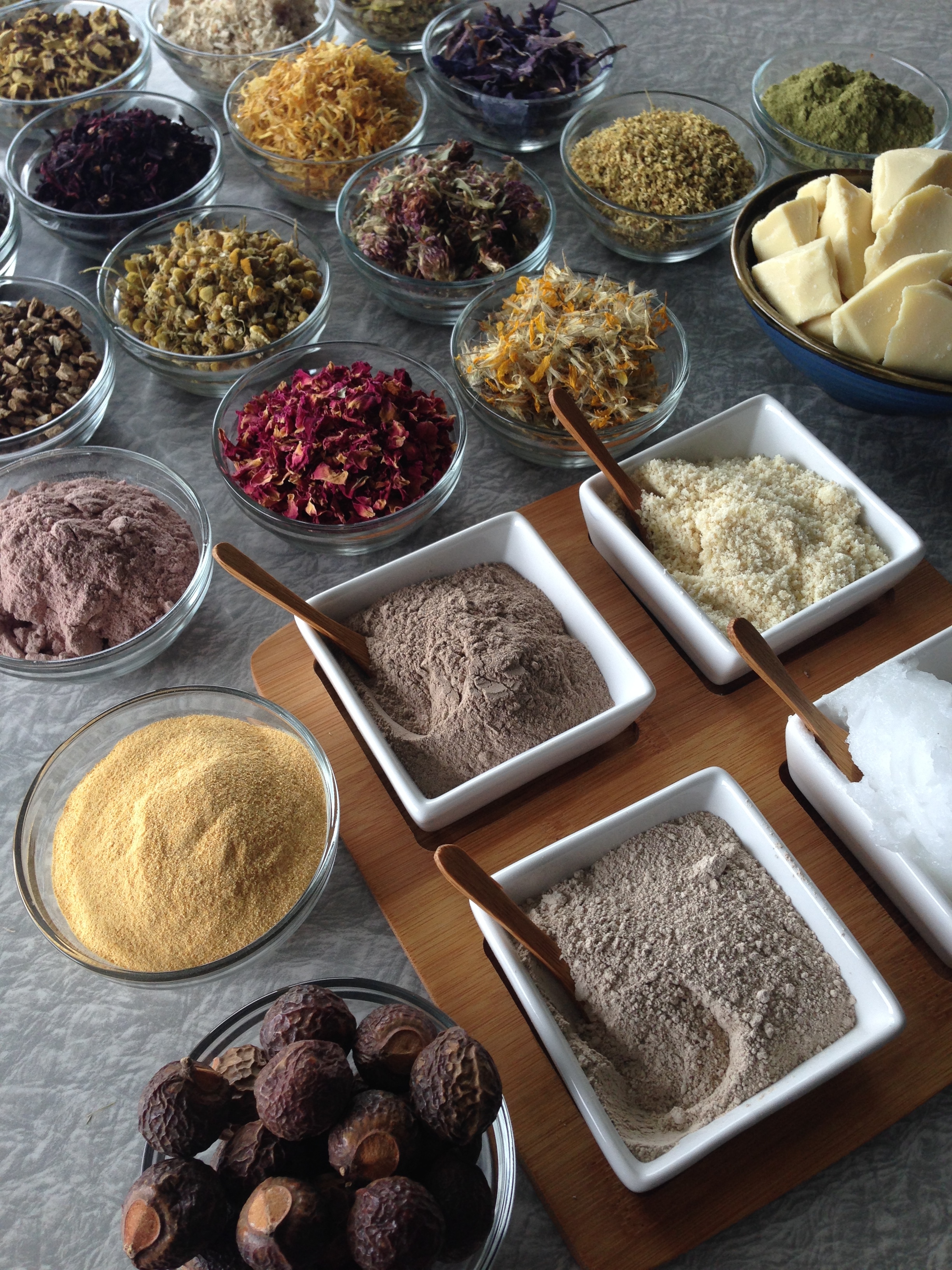Types of Panchakarma Treatments in Ayurveda
/photo by Carrie Gabella Photography
Purification Therapy
Panchakarma translates to “the five actions”; pancha means five and karma means action. Panchakarma is the five actions used to cleanse the body of ama or toxins. It is considered the ultimate shodhana chikitsa or purification therapy. This purification therapy removes ama and mala or waste products from the body, mind and spirit. It also restores balance to the dosha.
When ama builds up in the body, we begin to see manifestations of dis-ease. Oftentimes when we’ve entered into the later stages of the disease process, Ayurvedic lifestyle and dietary changes won’t produce the major shifts that the body needs. That is where panchakarma steps in. It purifies the body of any foreign and unhealthy substance, impression or karma that has been lodged in the body/mind.
Causes of Dis-Ease
There are three main causes of dis-ease according to Ayurveda.
Pragya Aparadha: Mistake of the Intellect
Asatymya-Indriyartha-Samyog: Misuse of the Senses
Kala-Parinama: Effect of the Passage of Time
Pragya Apradha or “mistake of the intellect”/“error in wisdom” refers to living and eating in disharmony with the self. This includes overuse of alcohol, smoking cigarettes, eating foods incompatible with our dosha, and focusing on feelings of negativity, hatred and anger.
Asatymya-Indriyartha-Samyog or “misuse of the senses” refers to unwholesome contact of the sense organs with their sense objects. Our sense organs (eyes, ears, nose, tongue, skin) are how we perceive and take in the impressions from the world around us. We can misuse the senses by excessive contact, insufficient contact, or unnatural or wrong contact. This includes listening to harsh sounds, extreme temperatures, exposure to skin irritants, watching violent media, smelling pollution, and tasting unhealthy and chemical-filled foods and drinks.
Kala-Parinam or “effect of the passage of time” refers to the transformations produced by the passage of time. Each dosha is associated with the different seasons; the times of day; and the cycles of life.
Vata: fall/autumn season; 2-6am & 2-6pm; older age ~55+
Pitta: summer and late-spring seasons; 10am-2pm & 10pm-2am; adolescence through midlife
Kapha: winter and early-spring seasons: 6am-10am & 6pm-10pm; childhood
Purvakarma
Before one undertakes one or more of the five cleansing actions of panchakarma, they first experience the preliminary procedures of purvakarma. Purvakarma prepares the body, mind and spirit to release the toxins and panchakarma are the actions that remove those toxins. According to the 6 stages of the disease process in Ayurveda, as the dosha become imbalanced, they relocate from their main sites in the digestive tract (vata=colon; pitta=small intestine; kapha=stomach) to the dhatus or tissues. We use purvakarma procedures to loosen the vitiated dosha from the dhatus so that they can move back to their main sites in the digestive tract to then be removed with one or more of the cleansing actions in panchakarma.
Types of Purvakarma Treatments
If you have looked into experiencing panchakarma at an Ayurvedic center, you may have seen a list of luxurious spa treatments. These treatments include snehana or oleation; swedana or therapeutic heat or fomentation; and lifestyle and dietary adjustments.
Abhyantar Snehana or internal oleation treatments: this usually includes taking spoonfuls of warm ghee on an empty stomach in increasing amounts leading up to panchakarma
Bahya Snehana or external oleation treatments
Abhyanga or Ayurvedic oleation therapy, sometimes referred to as Ayurvedic massage; this treatment can be performed by one or two technicians and includes shiroabhyanga or head massage, padabhyanga or foot massage, and full-body abhyanga; it utilizes specially-formulated herbal oils that are balancing to your specific imbalances
Udvartana is an herbal dry rub used predominantly for kapha-imbalances and in lieu of abhyanga in a daily treatment schedule
Garshana is an exfoliating dry rub used predominately for kapha-imbalances, where a technician uses raw silk gloves and specific strokes
Lepanas or herbal mud treatments
Shirodhara or third-eye treatment where a stream of warm medicinal oil is poured over the third-eye and forehead
Pichu is when a cotton cloth is soaked in herbal oils and placed on areas of the body in need of healing
Pishinchhali is a luxurious treatment where warm oils are poured over the oil, bathing the body in body
Karna Purna is oleation of the ears with ear oil
External Bastis are when a ring of dough is placed around a specific area of the body and filled with warm, herbal oils
Nabhi Basti: belly
Hrid Basti: heart
Katu Basti: lower back
Janu Basti: knee
Netra Basti: eyes
Kundalini Basti: spine
Swedana or Ayurvedic heat therapy
Bashpa Swedana or steam bath where steam is applied evenly to the entire body
Pindi Swedana is when boluses filled with herbs, decoctions, rice and milk or other healing substances are heated and pressed, rubbed or pounded on the body
Drava Swedana or warm decoction bath
Nadi Swedana or localized steam application where steam is applied to only specific areas of the body
The Five Actions
Panchakarma utilizes “the five actions” of vamana, virechana, basti, nasya, and rakta moksha to cleanse the body of ama and vitiated dosha.
Vamana or emesis therapy: this treatment is predominately used for kapha-imbalances and to remove toxins from the lungs and stomach; this procedure involves taking herbs to induce vomiting; this treatment is rarely performed in the United States and can only usually be experience in an Ayurvedic clinic in India
Nasya or cleansing of the head: it is sometimes called shirovirechana or purgation of the head; this treatment is predominately used for kapha-imbalances and to remove toxins from the head; this procedure involves nasal insufflation of medicated powders or medicated oils
Virechana or therapeutic purging: this treatment is predominately used for pitta-imbalances and to remove toxins from the small intestines; it involves taking purgatives or laxatives to remove mala, ama and toxins from the body
Basti or purification and rejuvenation of the colon: this treatment is predominately used for vata-imbalances and to remove toxins from the colon; it involves using herbal decoction or herbal oil enemas
Rakta Moksha or blood-letting therapy: this treatment is predominately used for pitta-imbalances and to remove toxins from the blood; in India it involves placing leeches on the body; this treatment is not practiced here in the United States; however, there are some practitioners who recommend blood donation as an alternate form of this treatment
If you are interested in learning more about the Five Prana Panchakarma program, click here.












